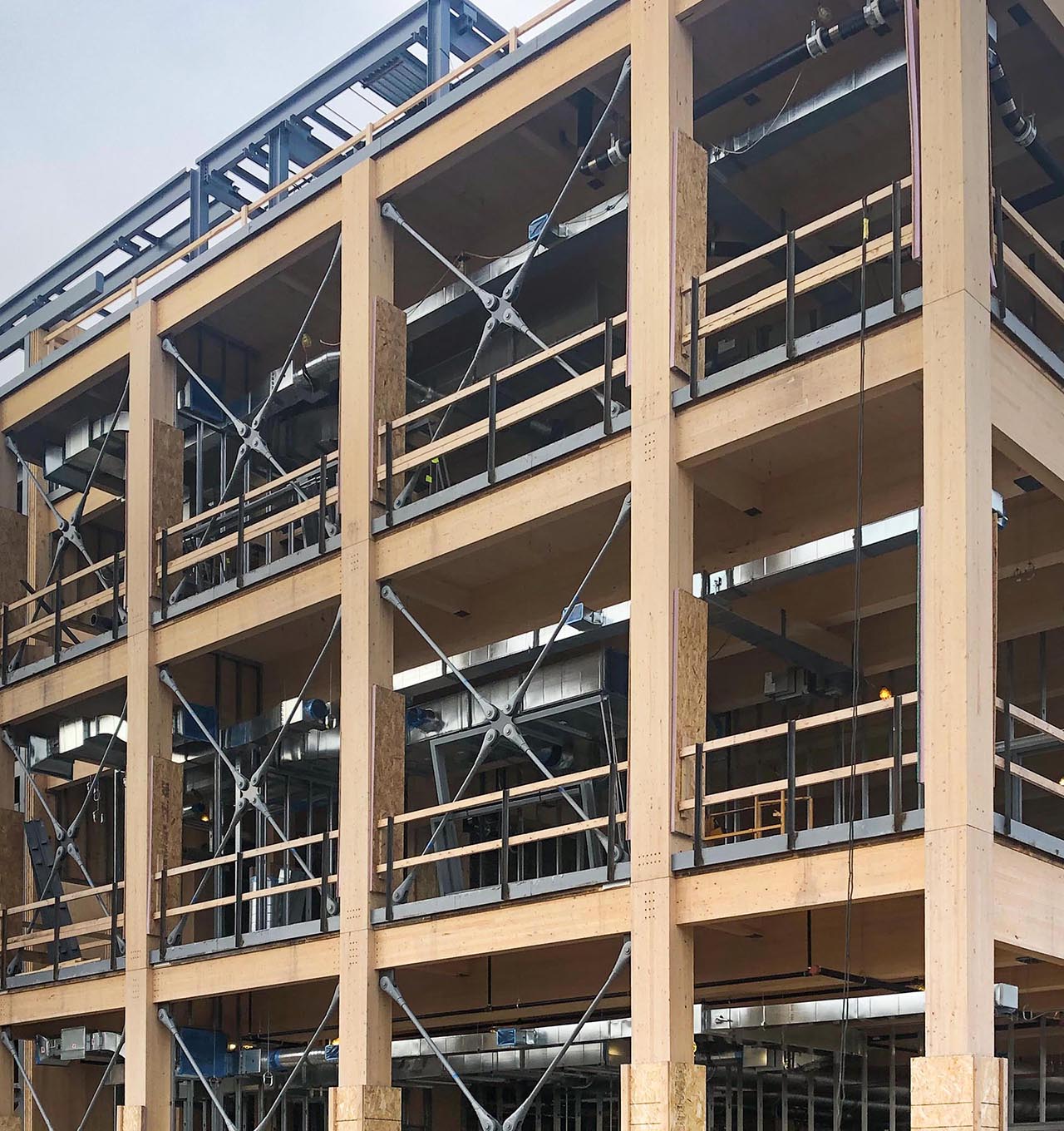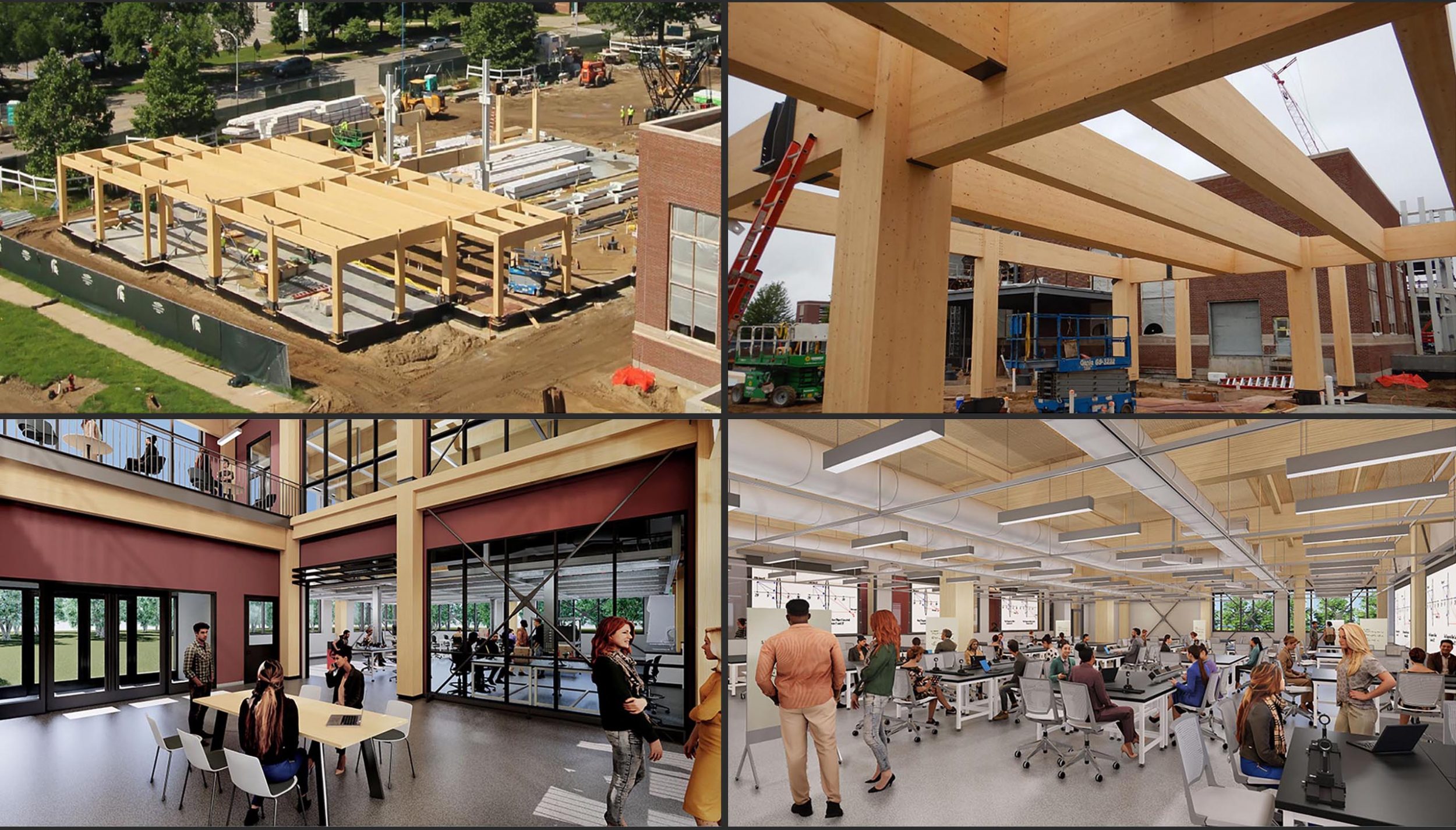Reducing Embodied Carbon
Mass Timber Construction
Michigan State University
STEM Complex
East Lansing, Michigan
Challenge: Showcase and utilize construction techniques that demonstrate MSU’s commitment to sustainable design in their new campus buildings. In particular, reduce the embodied carbon footprint of this new 175,880 SF STEM education building–and do so without increasing construction cost or on-site assembly time.
Solution: In lieu of steel framing, mass timber construction offers many practical, ecological, and regulatory advantages that steel cannot match.
Foremost among its ecological advantages, mass timber construction – characterized by cross-laminated wood panels, columns, and beams – is fabricated from a renewable resource: regional, fast-growing softwood trees. Because lumber as material has naturally sequestered CO2 , mass timber framing – even accounting for the energy required in its manufacturing, transport, and assembly – is typically a carbon-neutral framing system. By comparison, steel fabrication requires 24 times the energy and carbon output per ton as mass timber.
The assembly of mass timber members is akin to steel framing practices, so construction techniques are industry familiar and there is no assembly-time penalty. Furthermore, because mass timber is naturally non-combustible (it only chars), none of the assembly requires fire-protection coating or enclosures in this four-story building complex.
Benefits: Unlike exposed steel, which is an acoustically reflective material, wood provides sound-abortive mass to the building interior. Aesthetically, mass timber brings structurally expressive and unexpected natural beauty to the building interior.



